Willkommen: Hier finden Sie die deutsche Version unseres Briefes aus Berlin! Welcome to our Letter from Berlin! This week we focus on new projects and re-opening exhibitions. This week’s film screening presents two works by Liam Gillick, Construction of One, 2016, and Pelin Tan A Film by Liam Gillick, 2019. We also introduce his contribution to A Fair Land Pforzheim, a project organized by Robert Eikmeyer Please note these weekly viewing links are temporary: The films are available to view only through Sunday night, Berlin time. Anything you may have missed from our social media channels can be found on Continuity, our digital platform. Read this in good health.
|
|
|
Film screening this weekend – Two films by Liam Gillick
|
|
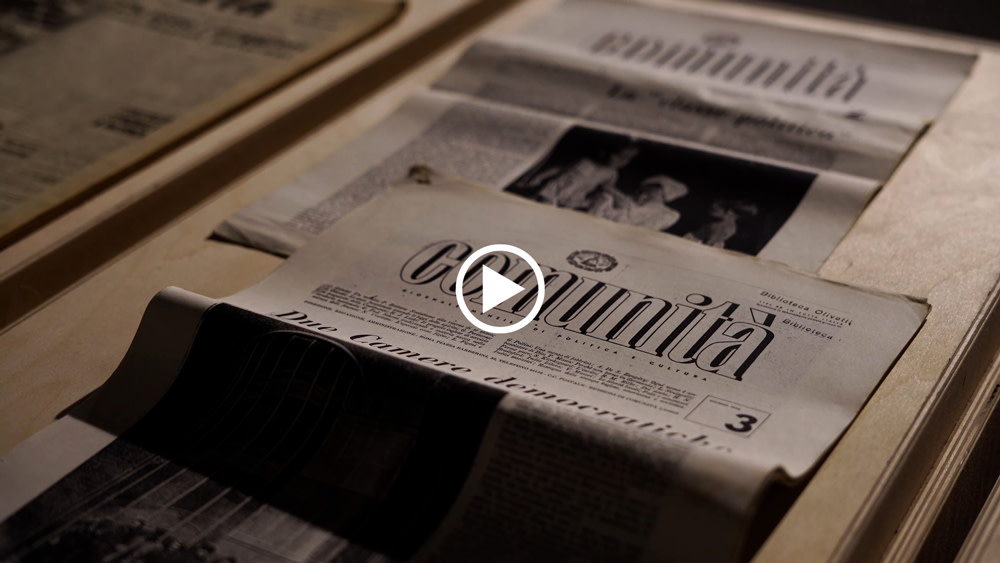
| Pelin Tan: A Film by Liam Gillick, 2019, 4K video, duration 27:54 min. Film still © Liam Gillick
| |
|
Pelin Tan: A Film by Liam Gillick, 2019
4K video
27:54 min
For Matera European City of Culture 2019, Pelin Tan researched labour conditions and the new sense of place and community that began with the Riforma Agraria in 1950: from the exodus from Matera’s Sassi to the newly built neighbourhoods in the decades that followed to the re-occupation of the Sassi by left-wing activists in the 1970s, and the contemporary arrival of migrants via the Mediterranean today.
Pelin Tan is a sociologist and art historian, the sixth recipient of the Keith Haring Fellowship in Art and Activism at Bard College Center for Curatorial Studies (2019 - 2020), and research fellow of the Center for Arts, Design, and Social Research (Boston). Tan is involved in artistic and architectural projects that focus on urban conflict, territorial politics, and conditions of labor. |
|
|
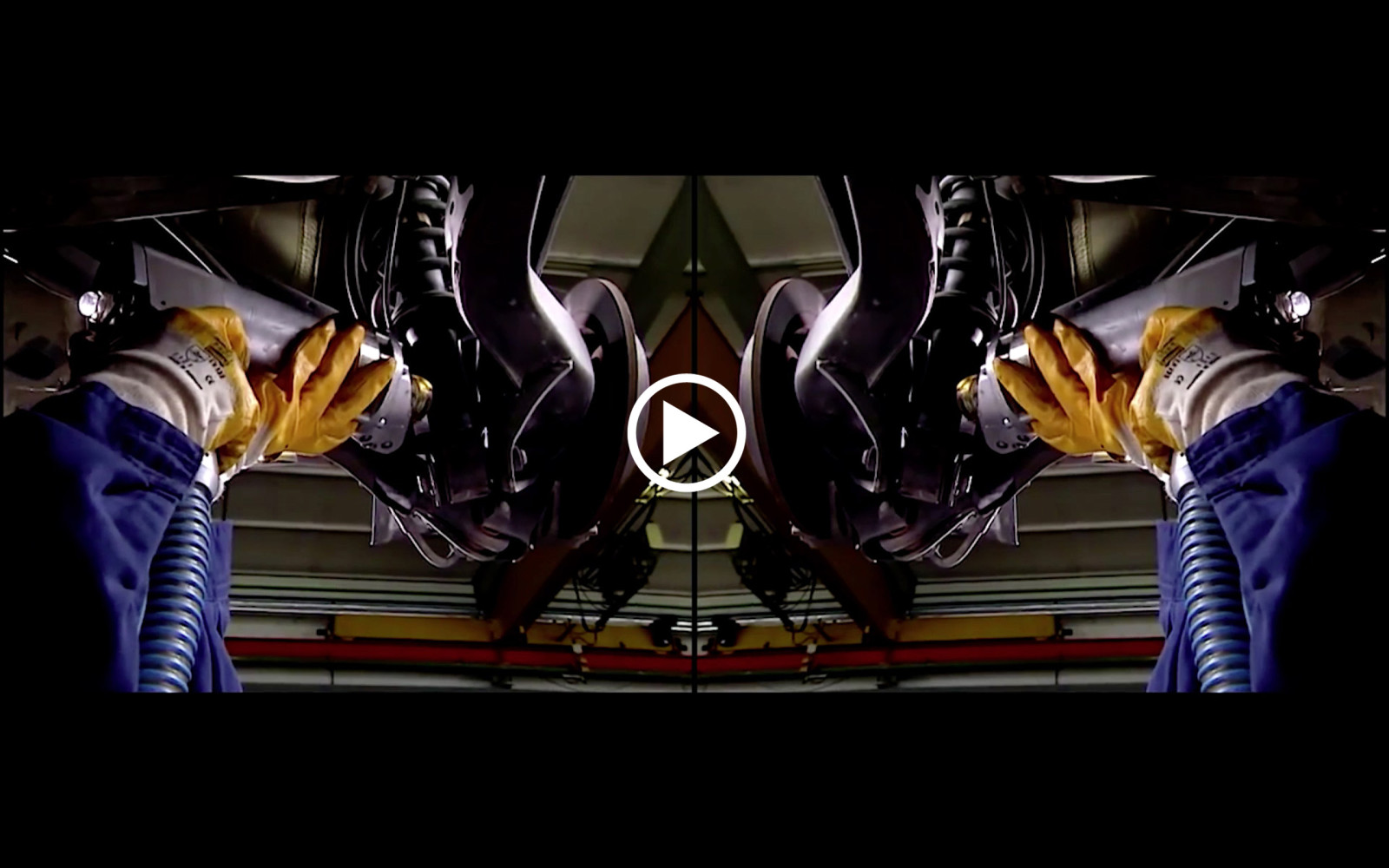
| Liam Gillick, Construction of One, 2016, HD video, duration 12: 24 min. Film still © Liam Gillick | |
|
Construction of One, 2016
HD video
12: 24 min
Found footage of BMW cars being completely recycled is mirrored and reversed. The music is from the first side of the artist’s 2016 record Oh! Wolfgang / Good Grief!
Construction of One began as a working title for various reflections on modes of production within late industrial contexts at the moment mass labor was on the verge of being replaced by automated systems. Beginning in 2005 with a sequence of exhibitions, films, theoretical texts, and publications, Construction of One is now a substantial manuscript of 45,000 words. The unpublished text includes an appendix that contains two lengthy analytical papers on the revised working practices deployed by Volvo in the early 1970s. While the manuscript as a whole is not about Volvo at any specific moment, it frequently returns to the theme of a site of production of large consumer goods (probably cars) in northern Europe at some point toward the end of the twentieth century.
The starting point of the work was a consideration of what might happen when there is crisis in a culture where there is not supposed to be a crisis. While avoiding precise documentary strategies in favor of interwoven narratives, structural speculations, and eco-political fantasies, the texts are (un)surprisingly prescient in light of recent collapses of the bank credit system and the increasing hold of nationalist politicians within the context of supposedly solid northern European social democracies with evolved and permanent values solidly entwined with “enlightened” labor practices. From the critical perspective of the advanced art context, these developments were not a surprise, while Construction of One as a whole can be read in the context of earlier texts such as Erasmus Is Late in its attempts to frequently return to moments of turning points or stress that appear to be masked or unrecognized, in isolation from a contradictory context of apparently stable exceptionalism immune to the ravages of piratical capital. Bearing in mind the history of postmodern skepticism about a classical Marxist focus upon the ethics of labor, Construction of One is repetitious, inconsistent, and permanently unfinished.
Oh! Wolfgang / Good Grief! is a limited edition 12-inch 45-rpm picture vinyl published by Brigade Commerz. The lyrical content of the record is an adaption of texts taken from Dave Beech’s book Art and Value: Art’s Economic Exceptionalism in Classical, Neoclassical and Marxist Economics (Brill, 2015).
Texts by Liam Gillick |
|
|
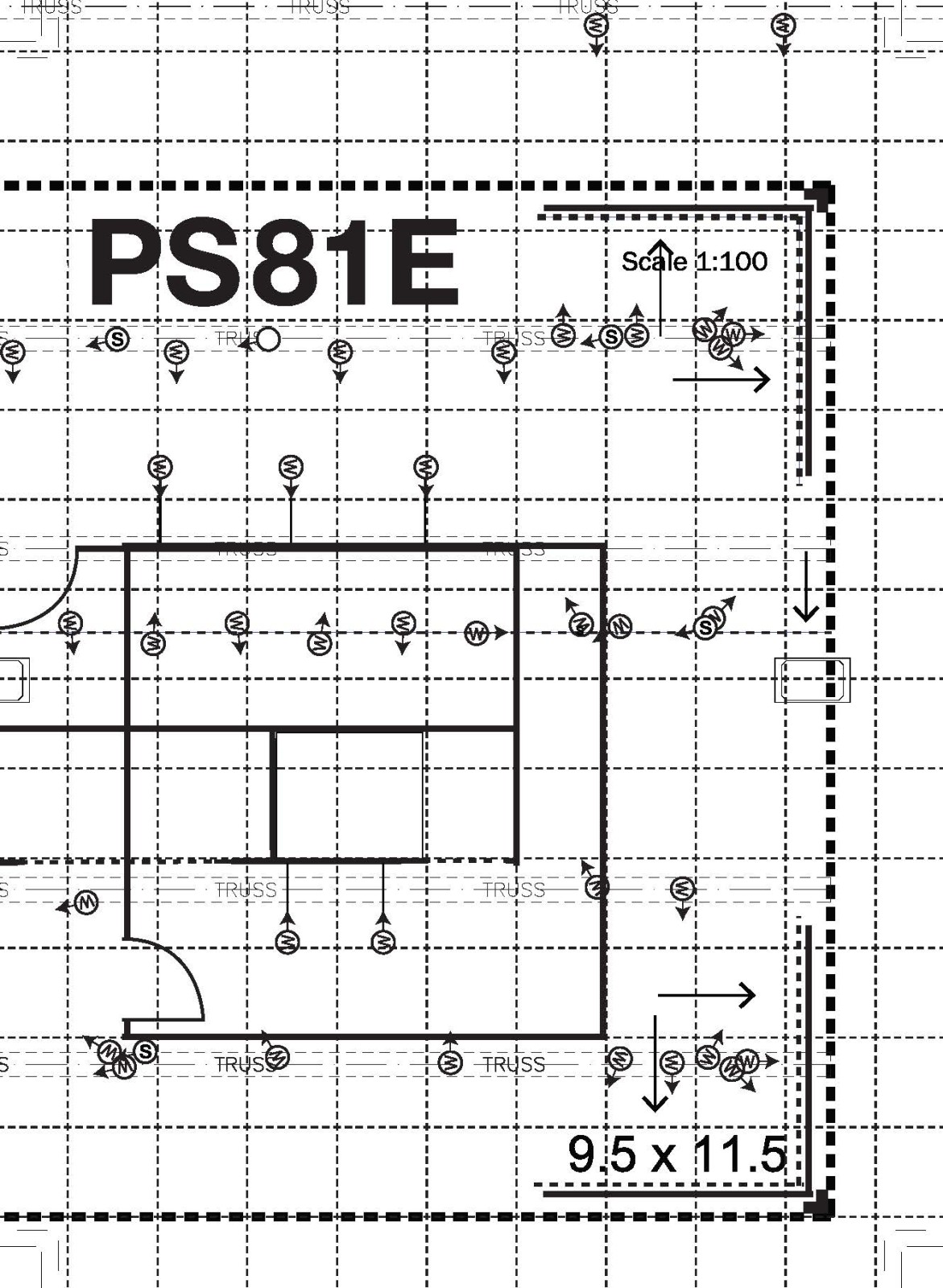
| Liam Gillick, Card for PS81E, 2020 | |
|
PS81E
with works by Stefan Bertalan, Martin Boyce, Matti Braun, AA Bronson and Reima Hirvonen, Angela Bulloch, Nathan Carter, Etienne Chambaud, Jean-Pascal Flavien, Ceal Floyer, Simon Fujiwara, Ryan Gander, General Idea, Francesco Gennari, Liam Gillick, Andrew Grassie, Ann Veronica Janssens, Gabriel Kuri, Jac Leirner, Ari Benjamin Meyers, Roman Ondak, Philippe Parreno, Ugo Rondinone, Christopher Roth, Anri Sala, Karin Sander, Julia Scher, Daniel Steegmann Mangrané, Tao Hui
June 16 - July 25, 2020
In a normal year we would be at Art Basel right now. We curated an extraordinary booth for this year’s fair, selecting major works and producing many new ones. Crated and shipped from around the world, the booth installed in three full days, our team would be ready to greet you. As doors would open and visitors rush in, time would become elastic: a million short encounters compressed into these hours.
Instead we have installed these works in our Berlin gallery. To some extent, this is an anti-fair: with certain social distancing requirements in place, there will be ample space and plenty of time to engage with each visitor. While access may be limited at times, time is not. With our exhibition PS81E we acknowledge the irreplaceable experience of encountering an artwork in person. We take this as an opportunity.
As the gallery has enhanced its digital accessibility, the last months have also led to an expanded dialogue with our artists that has informed this exhibition. What might have been Art Basel 2020—our fair booth—has grown in long conversation to become part of a new beginning, a new way to tell the story of our exhibitions—live and online.
We look forward to your visit in our gallery to view in Berlin what might have been Art Basel 2020 but now is PS81E.
|
|
|
Festival! A project by Esther Schipper and Mehdi Chouakri
#1 – Angela Bulloch | Gerwald Rockenschaub |
|
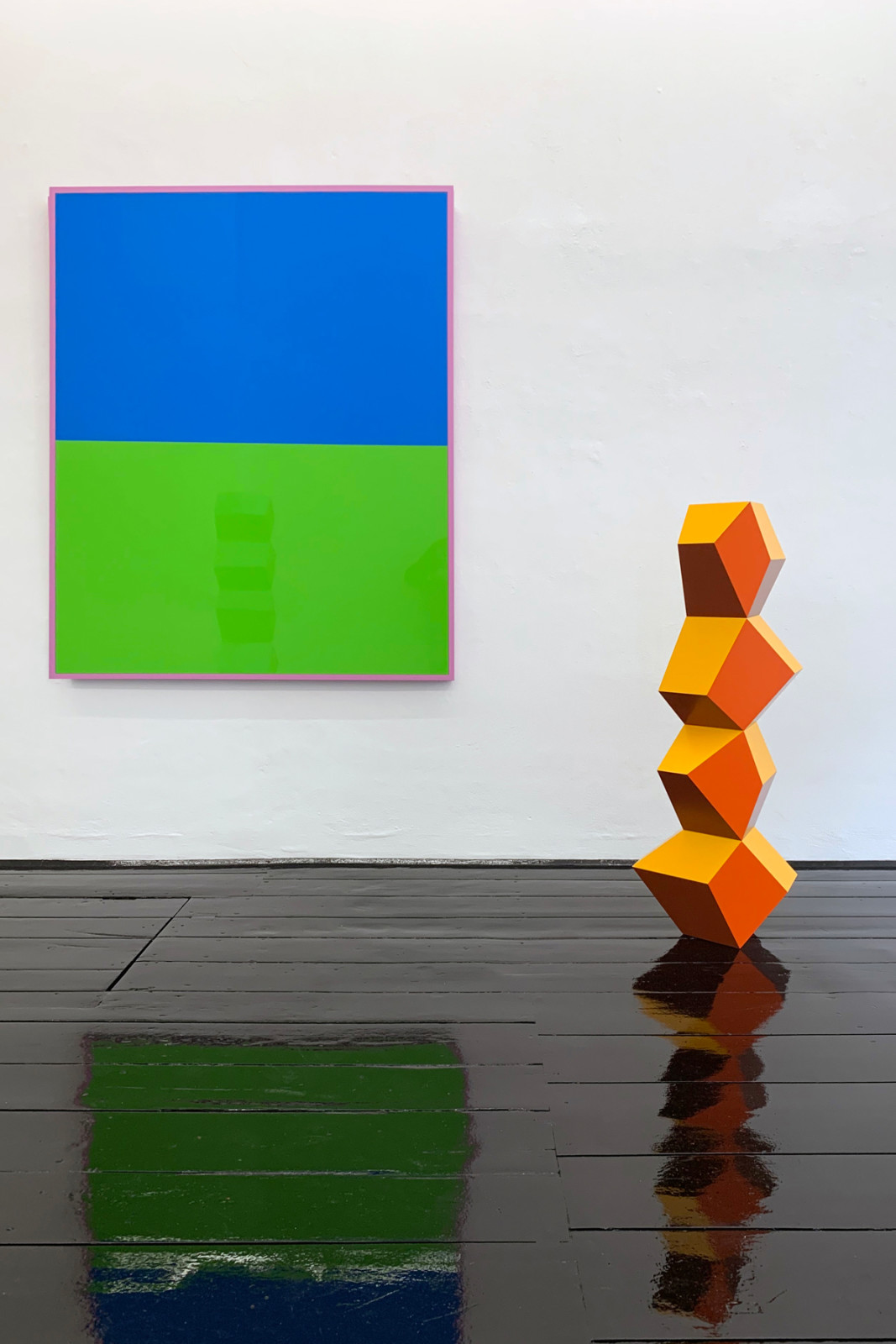 | Left to right: Gerwald Rockenschaub, Acrylic glass, MDF lacquered, 2019, 154 x 129 x 4 cm; Angela Bulloch, Four Form Stack: Golden Copper, 2019, MDF, paint, approx. 120 x 50 x 30 cm.
Exhibition view: Festival! A Project by Esther Schipper and Mehdi Chouakri, Mehdi Chouakri, Berlin, 2020
Photo © Mehdi Chouakri | |
|
FESTIVAL!
A project by Esther Schipper and Mehdi Chouakri
Mehdi Chouakri, entrance: Mommsenstrasse 4, D–10623 Berlin
New exhibition bi-weekly
June 12 – August 6, 2020
Angela Bulloch | Gerwald Rockenschaub, opening June 12, noon – 6 pm
Isa Melsheimer | N. Dash
Anri Sala | Saâdane Afif
Ari Benjamin Meyers | Charlotte Posenenske
Festival! begins with the friendship of artists and of their two gallerists, forging a bridge across 25 years and new beginnings, across personal, formal and conceptual affinities and yet-to-be-discovered connections.
The first exhibition brings together the work of Angela Bulloch and Gerwald Rockenschaub. The artists, who have exhibited together in the past, could be said to share a formal vocabulary informed by both minimalism and the digital. Angela Bulloch analyses and challenges the structures defining our social behaviors, with a sustained conceptual approach. Her work spans many media, manifesting her interest in systems, patterns and rules, as well as her preoccupation with the history of shapes and human interaction. The recent series of sculptures combines her interest in the logic of geometry and seriality with a graphic quality.
Initially known as part of the so-called Neo-Geo movement emerging in the early 1980s, Rockenschaub’s unorthodox approach to ingrained visual expectations is essential to his approach—he continuously seeks to thwart these in subtle, technically precise ways. The distinct proximity of his colors, shapes, and above all his artificial, synthetic materials to the world of product design is as familiar as it is alienating.
The following pairings will be Isa Melsheimer and N.Dash, who share a distinct approach to the materiality of their works, Anri Sala and Saâdane Afif who are great friends, and Ari Benjamin Meyers whose practice informed by his training as conductor shares a modular improvisation with works by Charlotte Posenenske.
|
|
|
Exhibitions opening and re-opening in Berlin
|
|
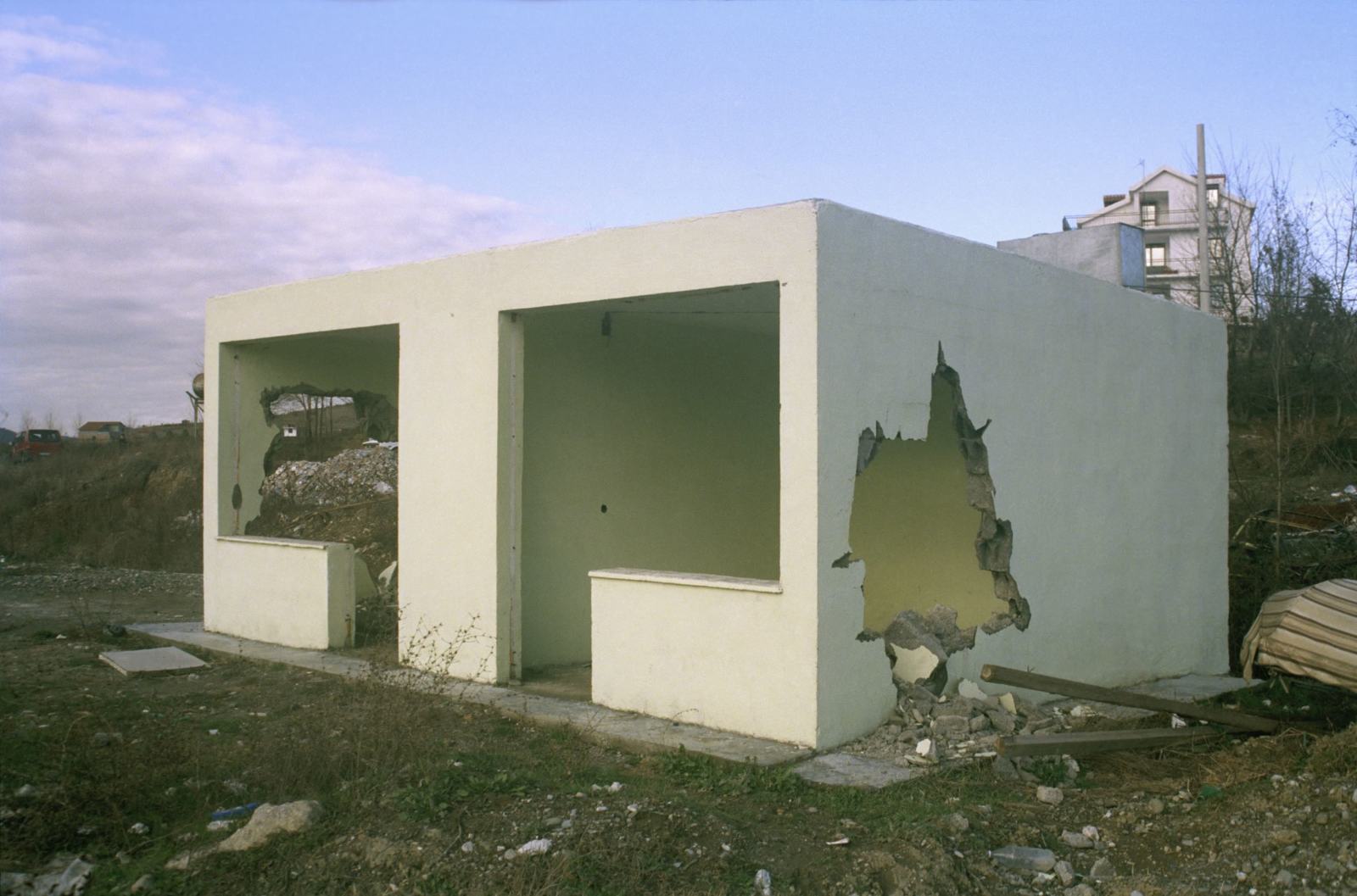 | Anri Sala, House with Horizon, 2002, Color photograph on dibond, 110 x 157 cm. Courtesy Hauser & Wirth.
© VG Bild-Kunst, Bonn, 2020
| |
|
As institutions and galleries open again, we want to update you on exhibitions in Berlin that include artists of the gallery. Aside from our exhibition PS81E and Festival, the joint project with Mehdi Chouakri, you can see a work by Anri Sala in Time Present, the presentation of photo works from the collection of Deutsche Bank at Palais Populaire, which opened this week, June 10th. The Boros Collection has re-opened and their by-appointment tours of the building, with works by Martin Boyce, can be booked. On July 1st the Daimler Collection is scheduled to open again its group exhibition with a work by Dominique Gonzalez-Foerster. Isa Melsheimer’s major solo exhibition at KINDL runs through July 5. |
|
|
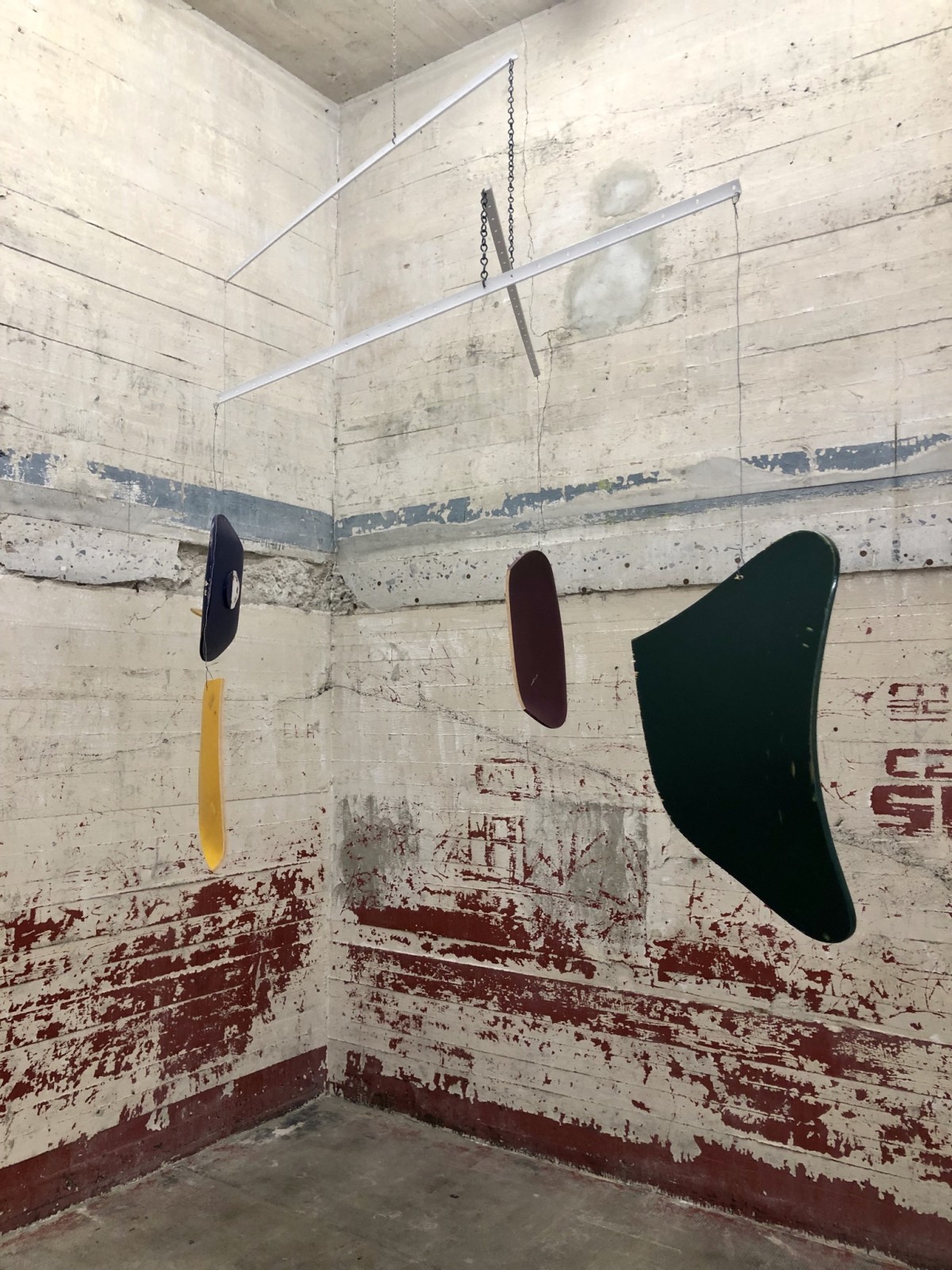 | Martin Boyce, We Pass But Never Touch, 2003, altered chairs, chain, wire, powder coated steel 300 x 300 x 300 cm. Exhibition view: Bunker #3, Boros Collection, Berlin 2017
Photo © Noshe
| |
|
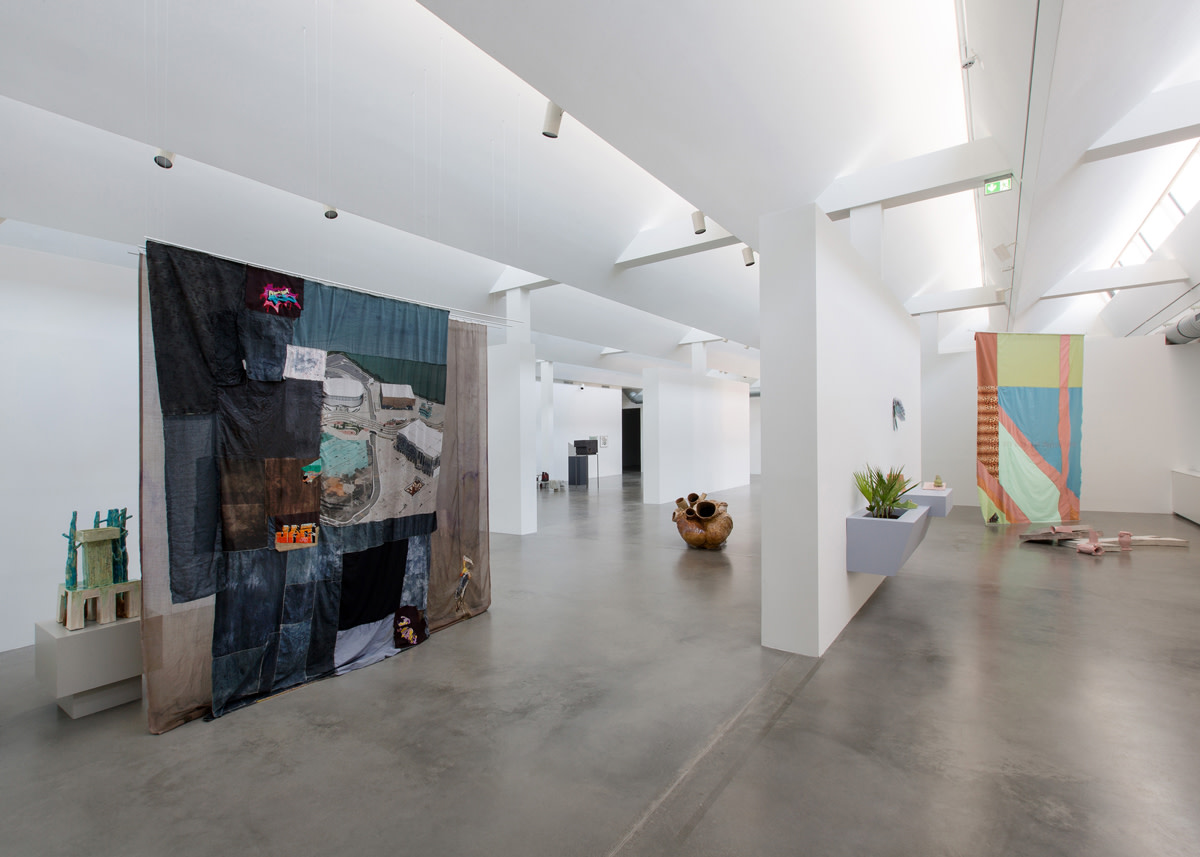 | Exhibition view: Isa Melsheimer, Der unerfreuliche Zustand der Textur, Maschinenhaus M2, KINDL – Centre for Contemporary Art, Berlin, 2020
Photo © Oliver Mark | |
|
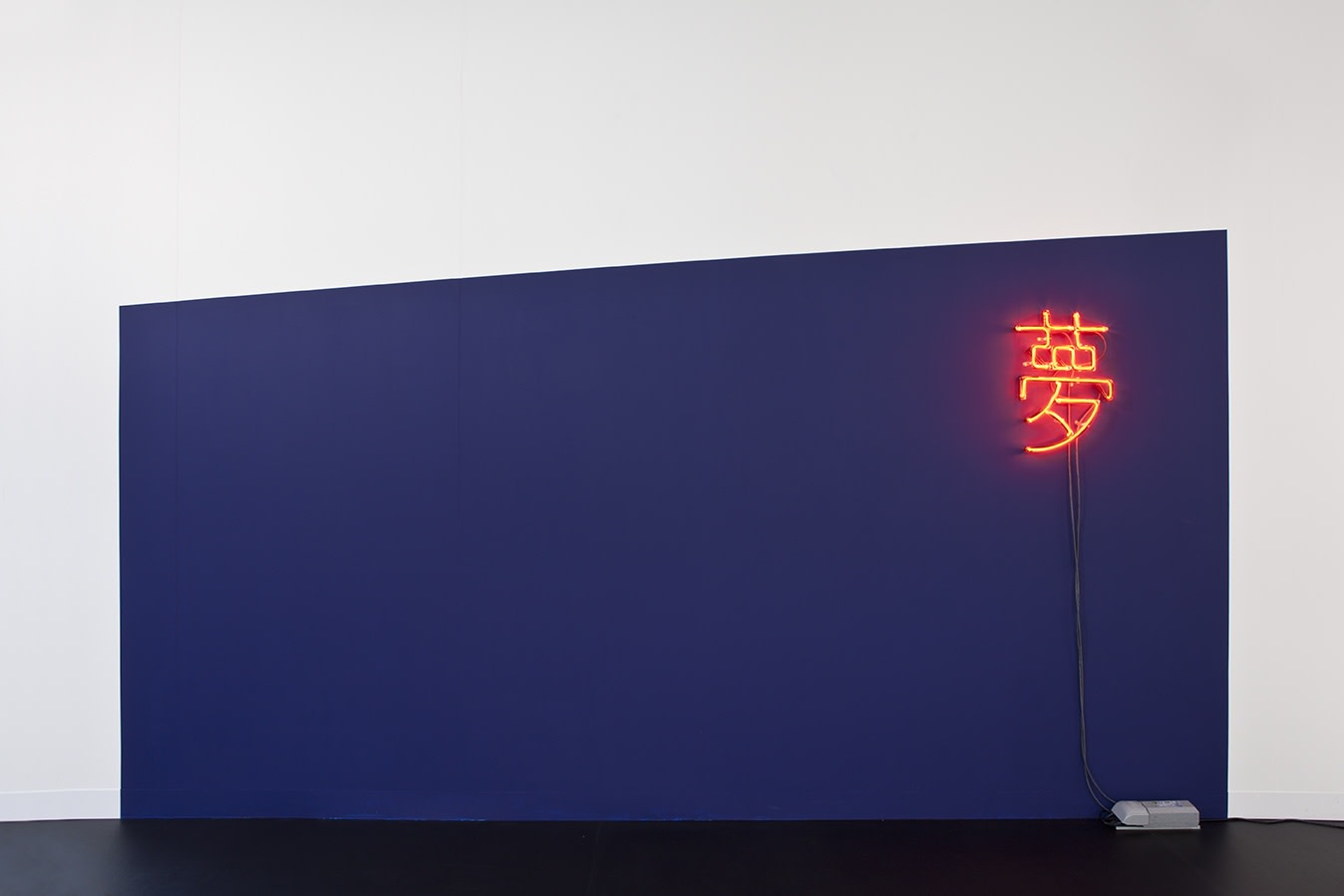 | Dominique Gonzalez-Foerster, Dream, 2001, high-voltage neon, transformer, colored wall, approx. 180 x 400 x 220 cm (wall painting), 50 x 33 cm (neon)
© VG Bild-Kunst, Bonn, 2020
Photo © Andrea Rossetti
| |
|
Liam Gillick – A Greener House for A Fairer Land, Pforzheim
|
|
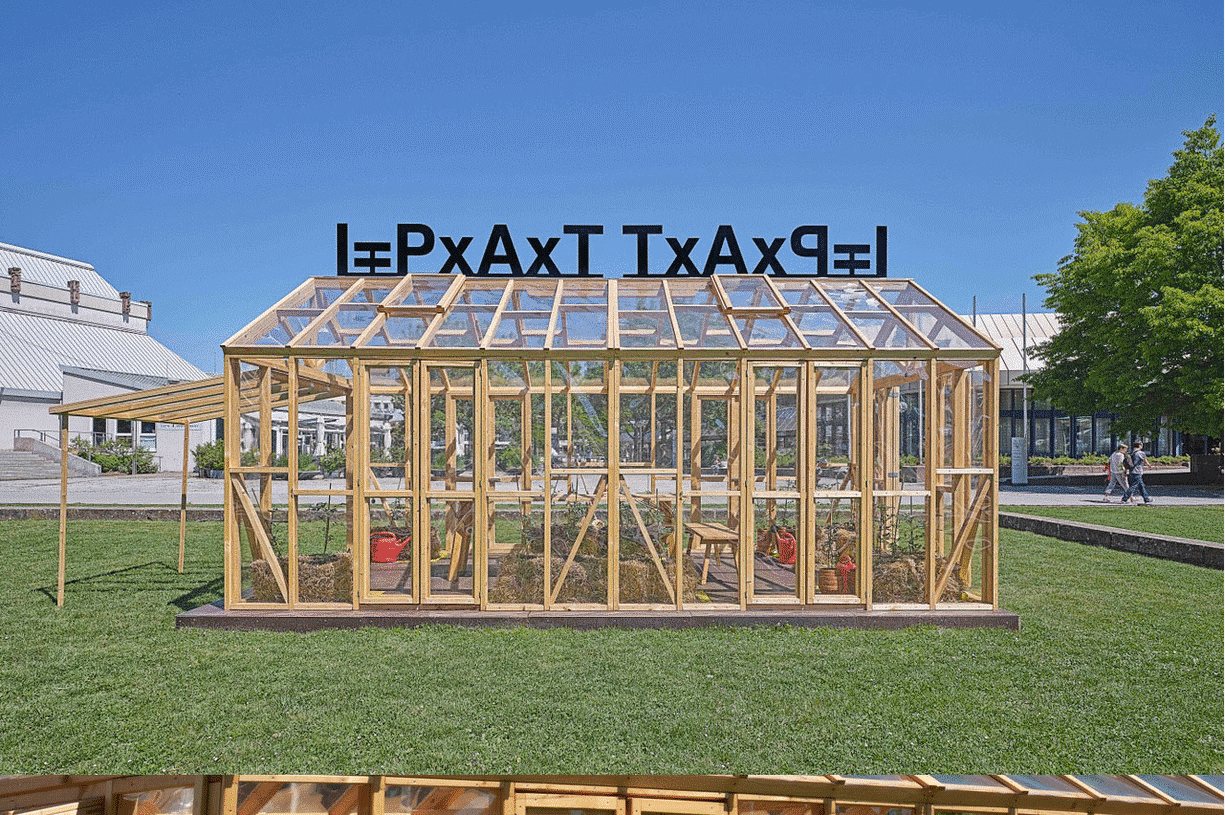 | Liam Gillick, A Fair Land Pforzheim, 2020
Photos © Lara Zettl & Julian Kirschler
| |
|
A Greener House for A Fairer Land
In late May the project A Fair Land Pforzheim organized by Robert Eikmeyer opened at the university in Pforzheim, a city in southwestern Germany. At its conceptual and physical center, a main square of the town, one of Liam Gillick’s works runs along the gabled roof of a greenhouse: similar to an architectural cresting it gives the building an enigmatic title: I=PxAxT.
The equations in Gillick’s works, often well-known in their respective fields, sometimes controversial, combine elements from many disciplines: among them biology, economics, ecology, physics, and/or sociology. While the universalizing language of mathematical formulas gives them an appearance of objectivity, the underlying concepts and the results (or better, forecasts) articulated in the calculations have often been disputed.
The artist has employed equations in several major public projects, among them works for the 2015 Istanbul Biennale, a commission for the European Central Bank, 2015, and more recently in Melbourne, Okayama and Seoul. As part of a project on occasion of the UN Climate Change Conference COP21, Gillick placed a series of equations relating to the Suki Manabe’s development of mathematical models for the study of climate change on all the platforms of the Parisian RER station at Gare du Nord.
In an interview the artist noted: "I have always been interested in mathematics, but especially now that algorithms have become so central to increasingly rapid economic trading and human manipulation. I turned to equations because they are often aesthetically beautiful. They cannot be Googled. They are an international language. They are a structure that can accept content and produce various results. I am working with equations now in relation to climate change and information theory. I realize that many of the things I wanted to talk about in text form can be better articulated via mathematics."
Gillick's text works often draw on a strategic "logical dislogic" and on a Situationist-inspired notion of play that acts as disruption in a self-consciously complex manner. This can take the form of a dynamic of playful disruption which includes concrete references while opaquely resisting easy comprehension towards the creation of productive irritation.
|
|
|
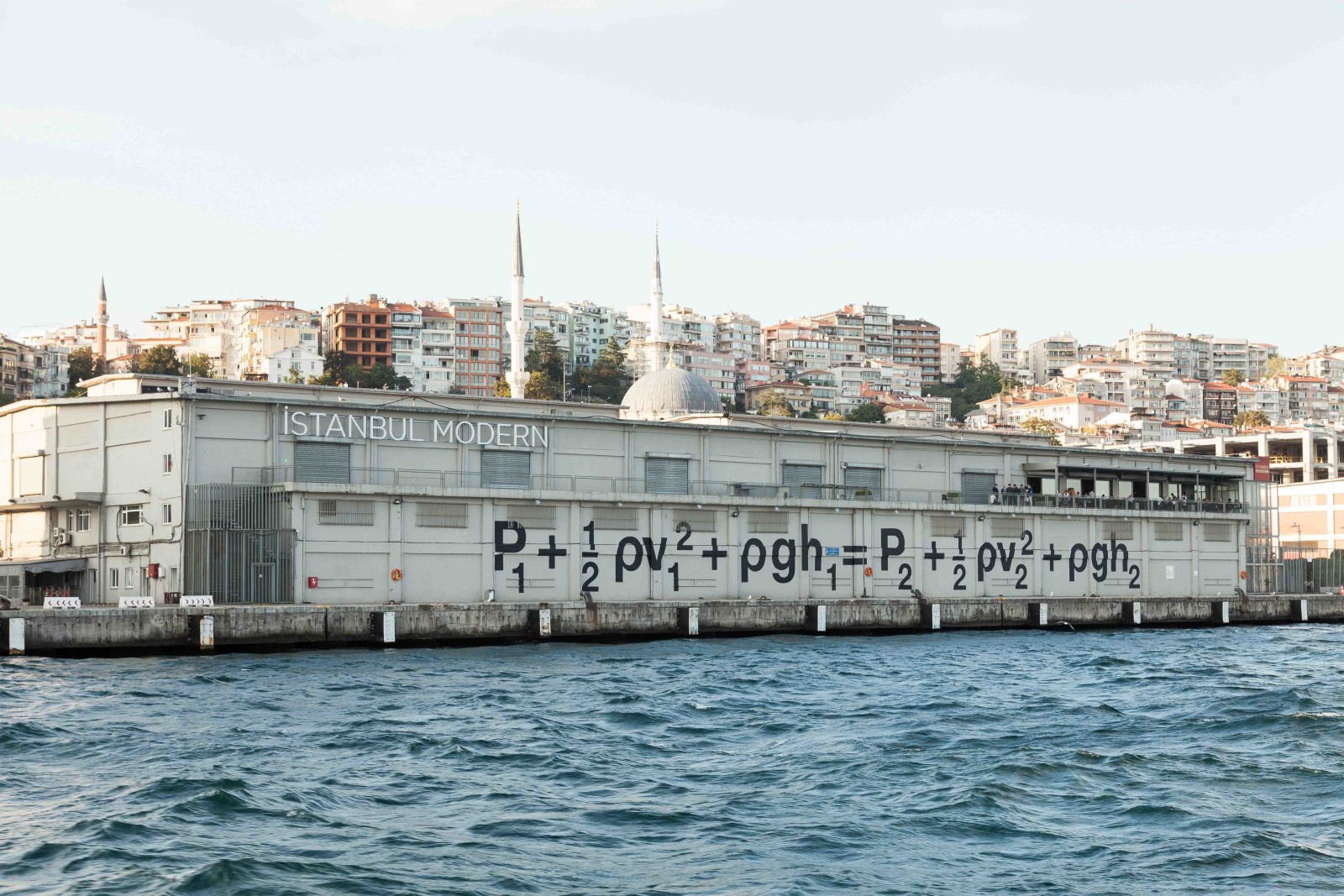 | Liam Gillick, Hydrodynamica Applied, 2015. Photo © Sahir Uğur Eren | |
|
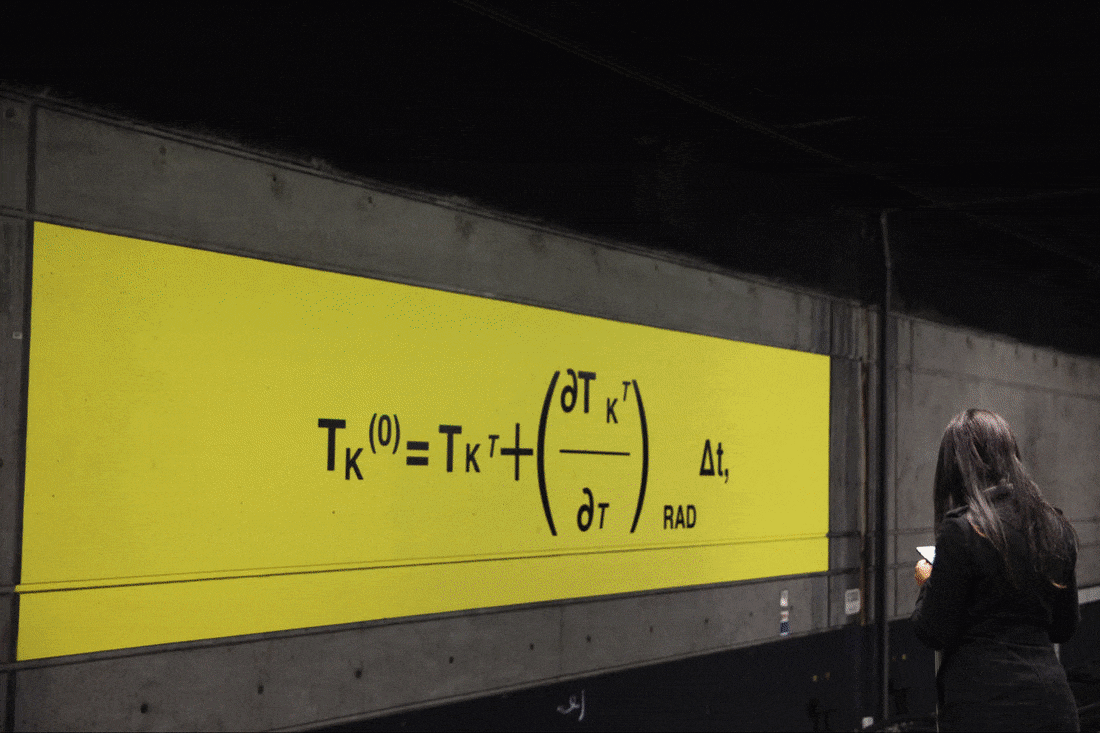 | Liam Gillick, The Logical Basis, 2015, Gare du Nord, Paris, on the occasion of UN Climate Change Conference COP21. Photos © David Paquin | |
|
A Fair Land Pforzheim is a project of the Faculty of Design at the University of Pforzheim which will be exploring art, design and architecture over the summer. The project takes the form of a model village with its own economy, based around a greenhouse and hundreds of courgette plants growing on bales of straw. “Designing” is understood here as a practice of design that creates places, artifacts and contexts that expand the user's range of action, temporarily reorganizing the relationships between people and their environment. The aim of the project is to create meaningful items and experiences from an absolute minimum of materials. The project starts with a multipurpose plant – in this case a quick and easy one – the courgette. Several hundred young plants are grown on site and form a spectacular straw-bale plot. From this harvest, other products and a self-contained economy develop. The prototype of A Fair Land was first realized by the British arts organization Grizedale Arts in 2016 at the Irish Museum of Modern Art in Dublin. As Hannah Duguid wrote in Frieze Magazine at the time: “ A Fair Land was a theatrical version of a model village, an imaginary system of living devised by Grizedale Arts, an arts organization based in the Lake District where creative thinking is infused into the basics of life. Every action undertaken by artists at Grizedale has some use value. Liam Gillick designed shelves for the library in their local village; during residences artists are at work in the garden by nine in the morning. In A Fair Land participants control every aspect of their lives. They grow and make their own food, clothes, crockery, furniture, houses, economy, and schools. It’s a domestic revolution undertaken with wit and a wry smile, where flower arranging, cutlery and table manners can become radical acts of self-determination. The ideas link back to the Easter Rising of 1916 – of which this project forms part of the centenary celebrations – when artists influenced by the Arts and Crafts movement of the late 19th century rejected industrialization in favor of a more creative society. World War I saw such ideals sink beneath a mass of bodies and Maxim machine guns.” With the IPAT equation Gillick has addressed the historical context of ongoing ecological debates. The I=PxAxT is a controversial equation posited by Paul R. Ehrlich and John Holdren in 1970 as way to forcefully demonstrate human impact on the planet. Ehrlich wrote The Population Bomb, published in 1968. In the equation I stands for Impact, P for Population, A for Affluence, and T for Technology. The book predicted mass starvation from population growth and consequent lack of resources despite rising wealth and developments in technology. The I=PxAxT formula in its most benign form offers a clearly expressed set of relationships between population, affluence and technology. To its strongest critics it tells us little more than a truism based on averages that blames the poorest on the planet for all our problems. Ehrlich made a number of predictions about global catastrophe in the 1960s and 1970s many of which did not occur. He has subsequently restated his fundamental insights and claims we are merely deferring the inevitable catastrophe caused by population growth. Questions of sustainable development, which the project in Pforzheim raises on a small scale, are posed in a global but also historical context by the reference to the IPAT formula in Gillick’s work. With the current project, the Faculty of Design continues its series on participatory design, in which workshops have already taken place with the collective Assemble, Van Bo Le-Mentzel and Vitra, among others. Throughout the summer workshops will be held, for instance, a cookshop with solar cookers hosted by Rikrit Tiravanija at the greenhouse in July, while Jonathan Meese is preparing a Fair-Land Flag. More information can be found on the project's Instagram account at @afairland_pf
|
|
|
Liam Gillick
Liam Gillick's 2019 Half a Complex surveys his work and selected writing since 2008. The title suggests a deliberately unresolvable incompletion at the heart of his work. Distinct bodies of his abstract works are documented in depth, revealing a self-conscious commentary on the conditions of production and reception that surround art today.
The book also includes his exhibitions, public projects, graphic works, films, and collaborations – and features an extensive body of texts by Gillick, who is also a prolific writer and critic of contemporary art. |
|
|
Exhibition re-opening in Seoul – Ann Veronica Janssens, Connect, BTS
|
|
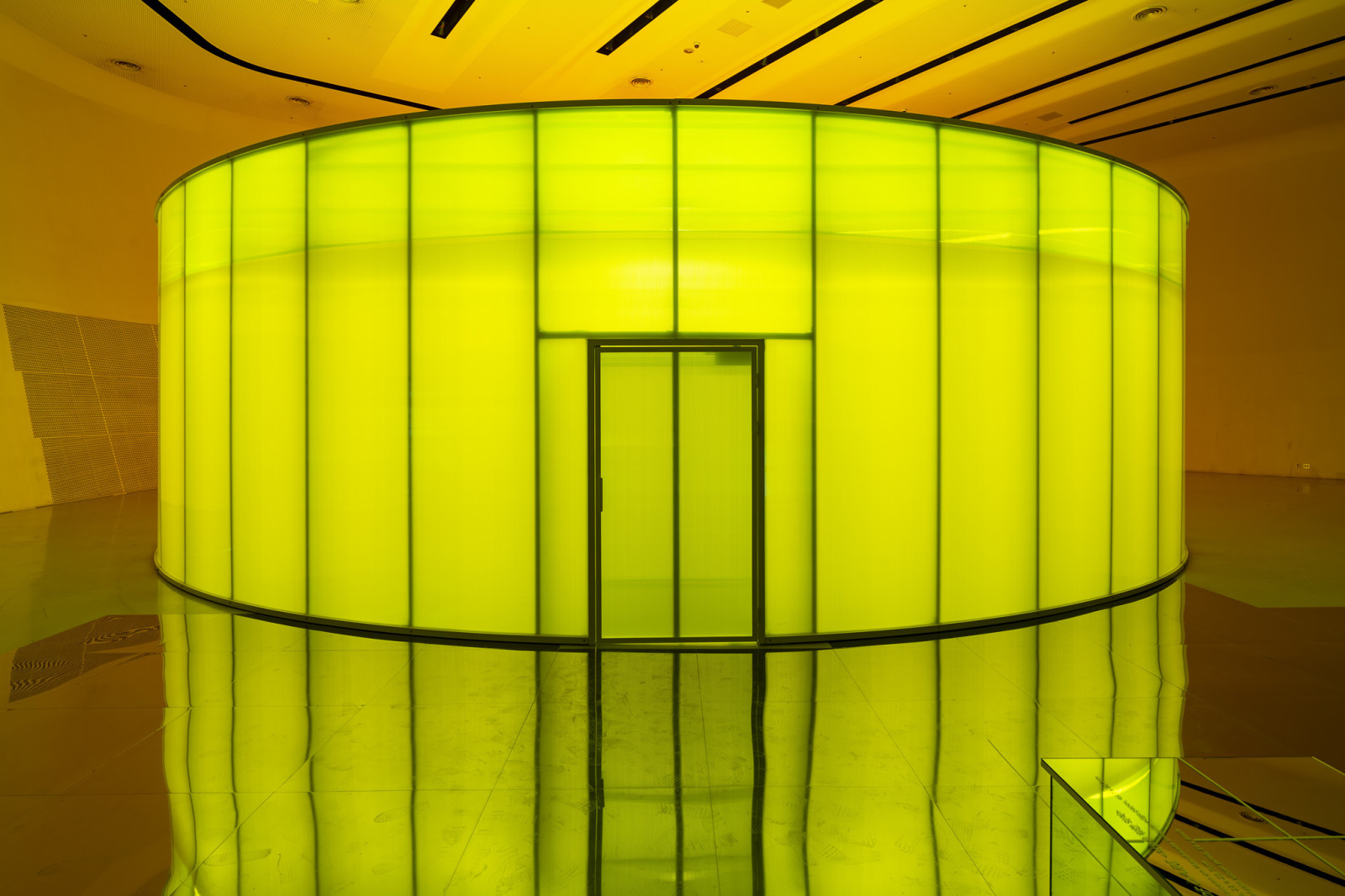 | Ann Veronica Janssens, Green, Yellow and Pink, 2017, artificial fog, green, yellow, and pink filters, dimensions variable. Exhibition view: Green, Yellow, and Pink, Dongdaemun Design Plaza (DDP), Seoul, 2020
© VG Bild-Kunst, Bonn, 2020. Photo © Jang Jun-Ho | |
|
Ann Veronica Janssens project will re-open in Seoul on June 19 and run through June 30, 2020.
|
|
|
Closing soon – Ann Veronica Janssens, Louisiana Museum
|
|
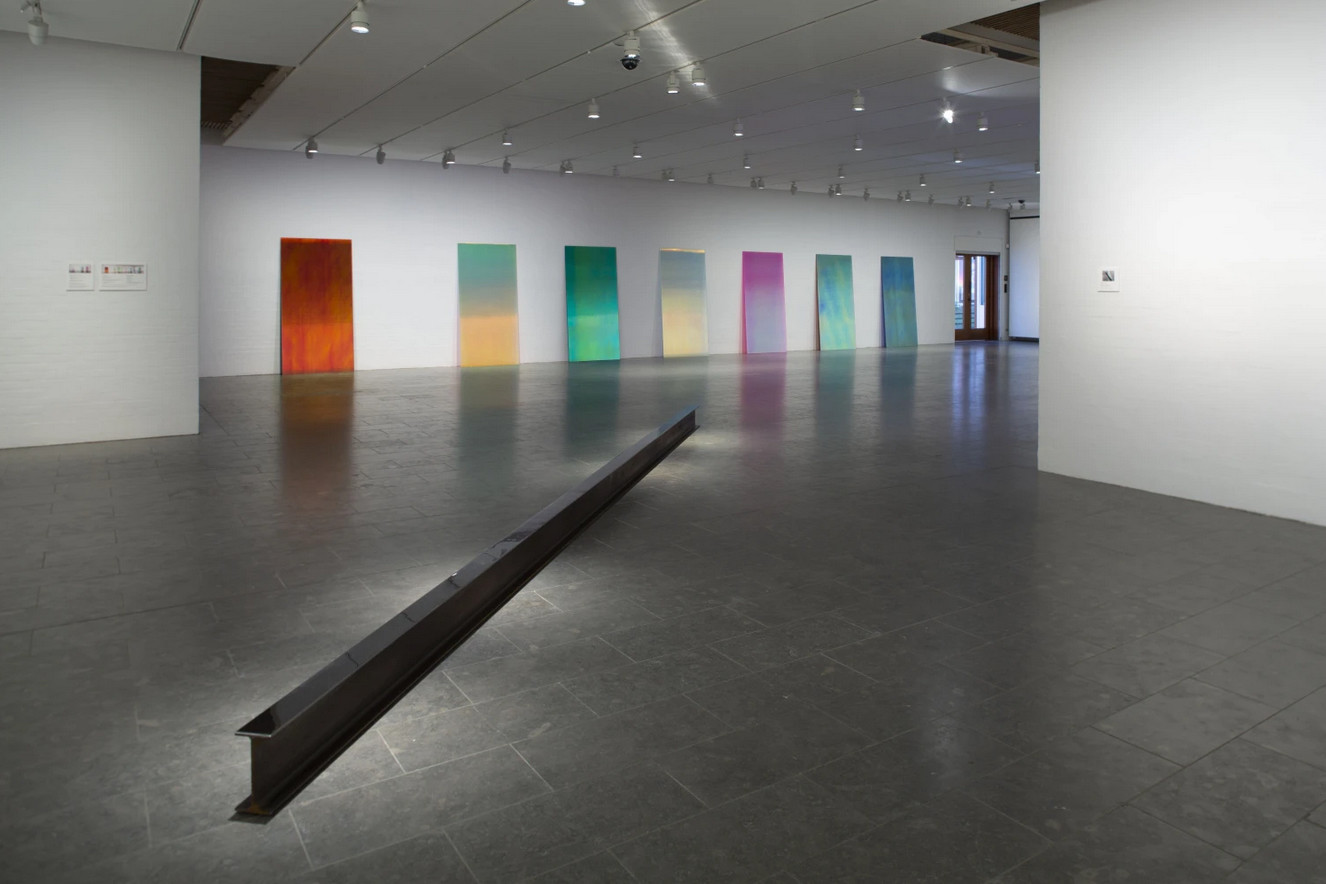 | Exhibition view: Ann Veronica Janssens, HOT PINK TURQUOISE, Louisiana Museum of Modern Art, Humlebæk, 2020. © VG Bild-Kunst, Bonn, 2020. Photo © Kim Hansen | |
|
Ann Veronica Janssens solo exhibition HOT PINK TURQUOISE at the Lousiana Museum of Modern Art in Humlebæk, Denmark closes June 21, 2020. |
|
|
|
|